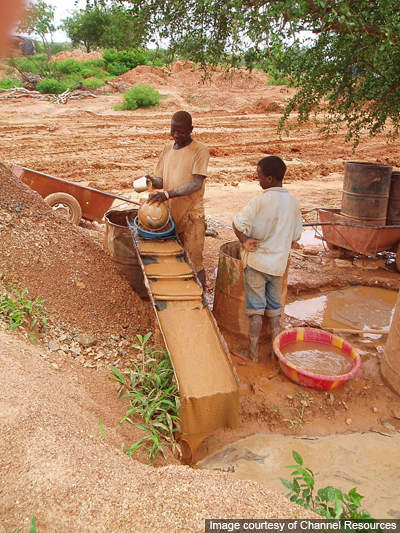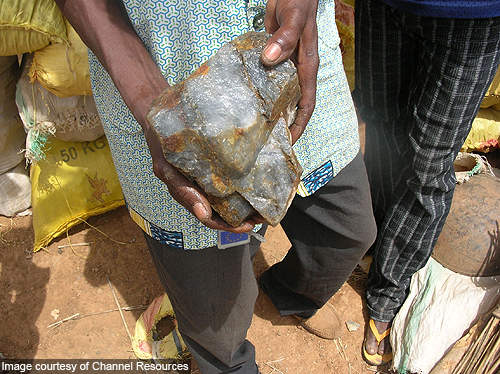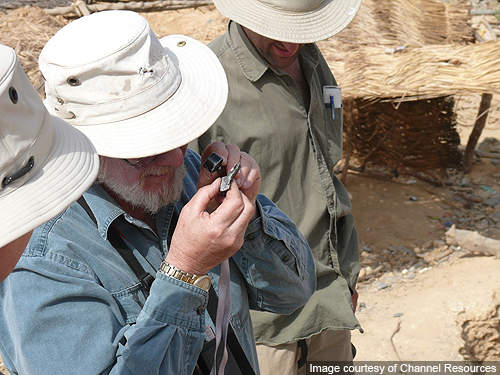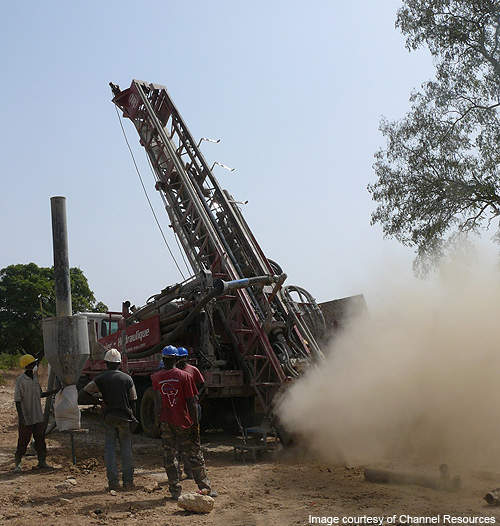The Tanlouka Gold Project is located towards the east of Ouagadougou, the capital city of Burkina Faso, West Africa. The 105km² property is owned by West African Resources (WAF) and is believed to be the latest gold discovery in West Africa. It comprises three main centres. The Mankarga zone, a 5km² area, hosted in the southern portion of the deposit, is the most explored zone among these centres.
The mine is currently in the initial stage of exploration. Channel Resources discovered two mineralised zones at the Mankarga 1 (M1) and Mankarga 5 (M5) zones during the first phase of drilling conducted between June 2010 and September 2010. In November 2010, the company started a larger drilling operation to access additional targets. Channel Resources was acquired by West African Resources in January 2014.
In September 2015, a shallow high-grade oxide mineralisation was discovered at M3 prospect which is located less than 2km away from the proposed starter pit. The follow-up reverse circulation (RC) drilling is scheduled for October 2015.
Completion of the feasibility study will be prolonged to the fourth quarter of 2015 to enable the incorporation of new oxide mineralisation from M1 and M3 zones into resource inventory and mine plan.
Geology
The deposit lies within the Birimian greenstone belt and is characterised by north-east trending shear zones. It straddles the Markoye shear zone, the main plumbing system for gold mineralised fluids.
Extending from northern Ghana to northern Burkina Faso, the 450km-long Markoye shear zone is a first order crustal-scale structure trending north-east. It hosts some of the large gold deposits of Burkina, including Essakane, Bombore, Kiaka and Taparko Baroum.
The shear zone has undergone two phases of deformation. During the first phase, north-north-west to north-west trending folds and thrusts were formed during dextral-reverse displacement. Formation of north-east trending regional folds and a pervasive north-east trending foliation took place in the second phase. Phase two resulted in south-east-north-west crustal shortening and sinistral-reverse displacement.
The deformation is characterised by north-north-east trending mylonite zones which are surrounded by pseudotachylite veins in the hanging wall and footwall and intruded by buck quartz-carbonate and quartz cataclasite veins. These veins are intruded by quartz-chlorite-(muscovite) shears created during reactivation of the MSZ.
The mineralised zone at the deposit is characterised by a sheared and mylonitised contact zone hosted between a gabbroic unit and metasediments that dip steeply towards the south-east. The zones of mineralisation appear to be associated with brittle-ductile deformation related with an intrusive edge. Arsenopyrite gold mineralisation is hosted within quartz veins that were formed during the first phase of deformation during metasomatic alteration of the host rocks. During the second phase of deformation, the gold mineralisation was formed within vein-stockworks.
Exploration
Historical exploration at the Tanlouka project involved only a shallow rotary air blast (RAB) programme. The first significant drilling programme at the project began in June 2010.
The phase one programme involved 20 holes and 2,500m of reverse circulation (RC) drilled across five different targets (Mankarga 1-5) at the Mankarga zone. Out of the planned 20 holes, however, only 11 holes extending 1,108m were drilled owing to mechanical issues and the onset of rains.
Results from this programme, announced on 17 August 2010, indicated a major new discovery at Mankarga 5. They also confirmed good potential for further exploration for discovery of new zones of mineralisation at the deposit.
A second set of results of the phase one reverse circulation drilling programme was reported in September 2010. The results indicated discovery of a new mineralised zone in the Mankarga 1 zone, hosted nearly 1,300m due-west of the Mankarga zone target holes. The two newly discovered mineralised zones are separated by a distance of 1.3km.
Exploration resumed at the property with phase two, a 10,000m reverse circulation drilling programme. The programme will involve the drilling of 65 holes, targeting mainly the Mankarga 5 and Mankarga 1 zones, and bracketing and follow-up of the two discoveries, besides conducting reconnaissance drilling to assess additional targets.
Drilling results on the initial twelve holes were announced on 20 January 2011. The results confirmed mineralisation at two holes within the Mankarga 1 region. At the Mankarga 5 region, seven holes confirmed extensions to the structure. A new mineralised body was also identified within the Mankarga 1 North area.







